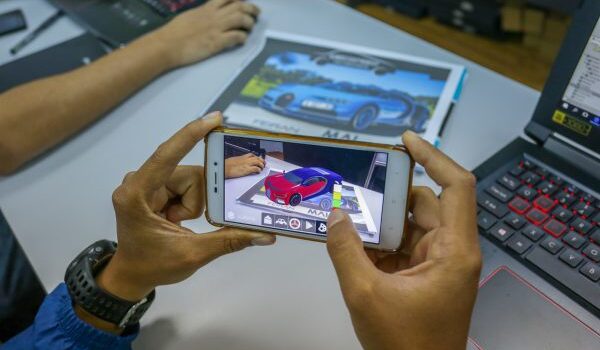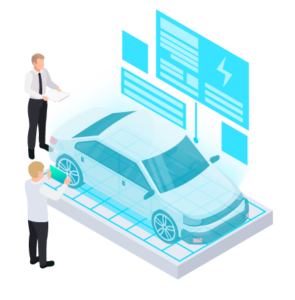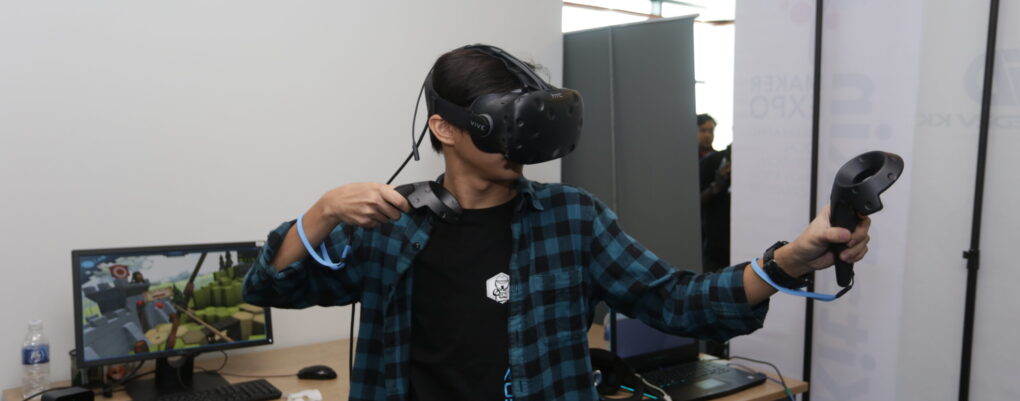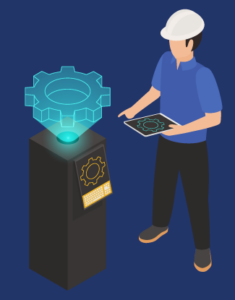The adoption of Augmented Reality (AR) and Virtual Reality (VR) in the manufacturing industry has contributed immensely to increasing productivity, reducing training costs and increasing the availability of new products into the market. AR and VR today plays a defining role in speeding the development process of a new product, factory planning and supporting the workforce with intelligent assistance systems.
Augmented Reality (AR) &
Virtual Reality (VR)

Combined, both enable companies to get a glimpse of specific issues of concern and the flexibility of making changes without incurring risks or being prohibited by time and cost. The impact of these immersive technologies is so great that it is increasingly being recognized as a instrumental tool in the design process and is now being employed across the manufacturing sector to not only enrich the creative process but to also bring ideas and innovations to the market at an unprecedented pace.
While VR allow designers to simulate, AR is an interactive experience that allows for digital content in the form of images, sounds and text to be superimposed on to a real-world environment. This technology provides manufacturers with the opportunity to preview and assess how their products would look like or interact in the real world.

The adoption of AR and VR complements, and does not replace, technologies that are currently being employed in the form of Computer Aided Design (CAD) and Computer Aided Engineering (CAE). The current limitation of CAD is that it is confined to plain geometry defined my kinematic mechanism and animation. CAD systems are also no longer exclusively being used for design purposes but also perform advanced modules for simulating physical effects. The utilization of CAD however, is only available to a limited extent within the development department using model viewers in making assessment of errors and design. This is where AR and VR come into play with more user friendly modules.





Spearheading these disruptive technologies domestically, MARii today provides comprehensive training programmes aimed at encouraging greater use of VR and AR in the Malaysian manufacturing sector. The Institute is also in the final phase of establishing a National Digitalization Centre (NDC) in collaboration with national car manufacturer PERODUA. The centre will function as a shared facility and serve as a visualization centre that will allow Malaysian automotive component manufacturers access to these tools in order to speed up design reviews by eliminating the use of physical clay modeling prototypes.
These efforts resonate with Malaysia’s aspirations of becoming a regional hub for high-tech industries, as AR and VR begin to make a significant impact globally with more than 1 in 3 manufacturers in the United States currently use VR and AR in their business operations, and countries like India, Japan and China in the forefront of adopting these solutions to enhance quality control, increase automation, minimize operational cost, and execute predictive maintenance.
| Summary of Program | |||||
|---|---|---|---|---|---|
| TIMING & DURATION |  |
TARGET AUDIENCE |  |
MAIN OBJECTIVE |  |
 |
|||||